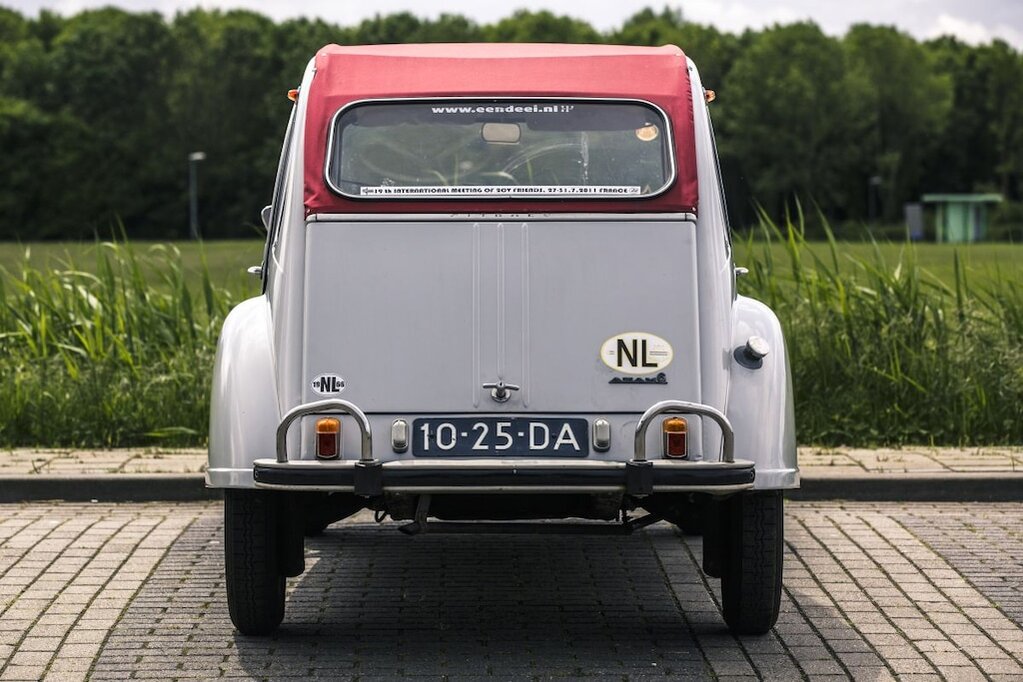
“You have openly copied us.” That is what Citroën director Pierre Bercot wrote in 1961 to Pierre Dreyfus, director of Renault. The reason was the presentation of the Renault 4, which showed many similarities with the then already thirteen-year-old Citroën 2CV. The market ultimately turns out to be large enough for both combatants, who mainly show their happiest side in this double test.
“The swan of Citroën has hatched an ugly duckling.” With these words, a Dutch journalist describes the creation that Citroën presents to the public at the Paris Motor Show in 1948. With that, the best man – intentionally or unintentionally – pins a permanent name tag on the lapel of the small, round and indeed rather unsightly car. However, the derogatory name ‘Ugly Duckling’ is very appropriate: the way it waddles down the street bears a striking resemblance to the not very elegant gait of a drake strolling to the local park pond. Despite a very modest pace, it leans considerably in bends. The howling engine noise of the car also brings to mind the loud quacking of Donald Duck in a bad mood. The 2CV owners were by no means put off by such qualifications, and even stuck stickers on the boot lid with slogans such as ‘Duck Drivers do it in their Duck’. Just to emphasize that they themselves did not take their vehicle too seriously either. But in the meantime, the 2CV could certainly be considered . Immediately after the first unveiling in Paris, trade fair visitors flock together around the dirt-cheap vehicle, with which Citroën will enable entire generations to own a car at all. The name of the vehicle helps, because the term 2CV refers to the two fiscal horsepower that the French government assigns to the car.

Waiting lists arise in France; in the worst case, the patience of future owners is tested for no less than six long years. What they ultimately get for their hard-earned Francs is as impressive as it is minimalist. The technical construction of the smallest Citroën is characterized by brilliant simplicity. Nothing on a 2CV is superfluous, while at the same time nothing really essential is missing to make driving the car possible. Just before the world premiere, the final prototype is quickly fitted with a second headlight, because oncoming traffic mistakes the prototype (called TPV or Toute Petite Voiture) with its single lamp for a motorcycle in the dark, with all the dangers that entails.
Starter Motor Insead of Cranking
Citroën also decides that there should be a starter motor after all, in addition to the crank with which the engine was normally started. “Women should also be able to start a 2CV,” says the manufacturer. The hydraulically operated disc brakes, which are mounted directly next to the three-speed gearbox so that the unsprung weight remains as low as possible, are quite advanced. No one cares about performance. Citroën thinks a top speed of 60 km/h is enough; farmers, who are seen as the most important group of buyers, will not want to transport their eggs across the French fields much faster anyway. For this reason, the air-cooled, low-maintenance two-cylinder boxer engine gets only 375 cc and 9 hp. Nine! It will be years before Citroën grants its esteemed clientele more cubic centimeters and horsepower; in small steps the power climbs from 9 to 12, 13, 18, 21, 28 and finally 33 wild hp.
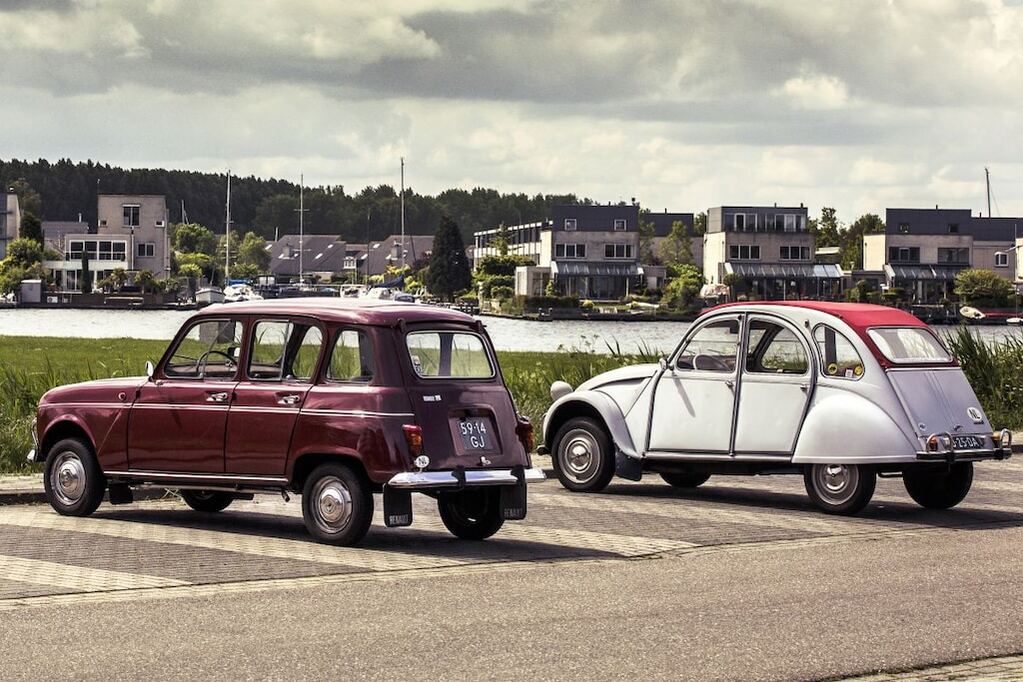
For this comparative test of AutoWeek Classic we have a beautiful, originally Dutch Renault 4L Export from 1968. The Duck is an at least as beautiful and also Dutch Citroën 2CV. To be precise, the Citroën is of the AZAM 6 type, from the year 1966. When the cars steer over a roundabout, the historic bodies swerve to the left and right with lazy movements. A magnificent sight that can only make a person happy. The classic content of the Duck and the Four has now risen far enough to ensure that the other traffic does not only treat them as annoying obstacles, but as respected representatives of the automotive heritage. There is no bystander who has nothing to do with these cars, or it must be young people who have no idea what they are seeing. A group of American touring cyclists, who, like us, are visiting the historic residential park De Realiteit in Almere, are amazed. “Wow, what Kinda Cars Are That? We’ve never SEEN Them in the States”

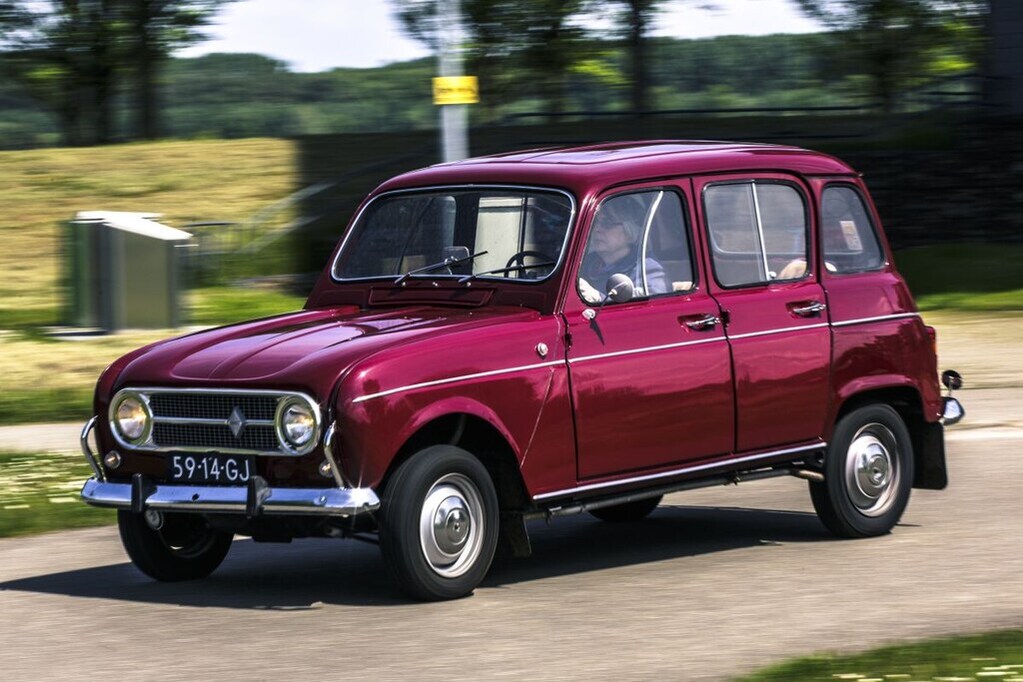
The Renault 4 may conceptually resemble a 2CV, but the car is being developed for a completely different target group. In the late 1950s, Pierre Dreyfus learned of a new demographic development, which predicted that large parts of the population would move away from the busy cities to settle in suburbs with large shopping centers near the arterial roads. In addition, interest in recreation at a greater distance from home is growing. Dreyfus realizes that this lifestyle requires a car that not only had to be very affordable, but above all had to offer a maximum of space. When the director makes his wishes known to his engineers, they quickly conclude that their boss wants his own 2CV. Yet the R4 becomes a different car, which nevertheless heralds a huge turnaround in Renault’s model policy; the popular Renaults 4CV and Dauphine had the engine in the back, while the 4 gets it in the front with the drive in the same location. Like the 2CV, the body is relatively narrow and high and has four doors. However, Renault has an ace up its sleeve, in the form of a tailgate that hinges upwards in its entirety. The 2CV initially had no boot lid at all, because its canvas roof ran from the windscreen to above the rear bumper. A separate boot lid came later, while the large tailgate, which would later be referred to as the fifth door, would only be introduced on the Dyane.
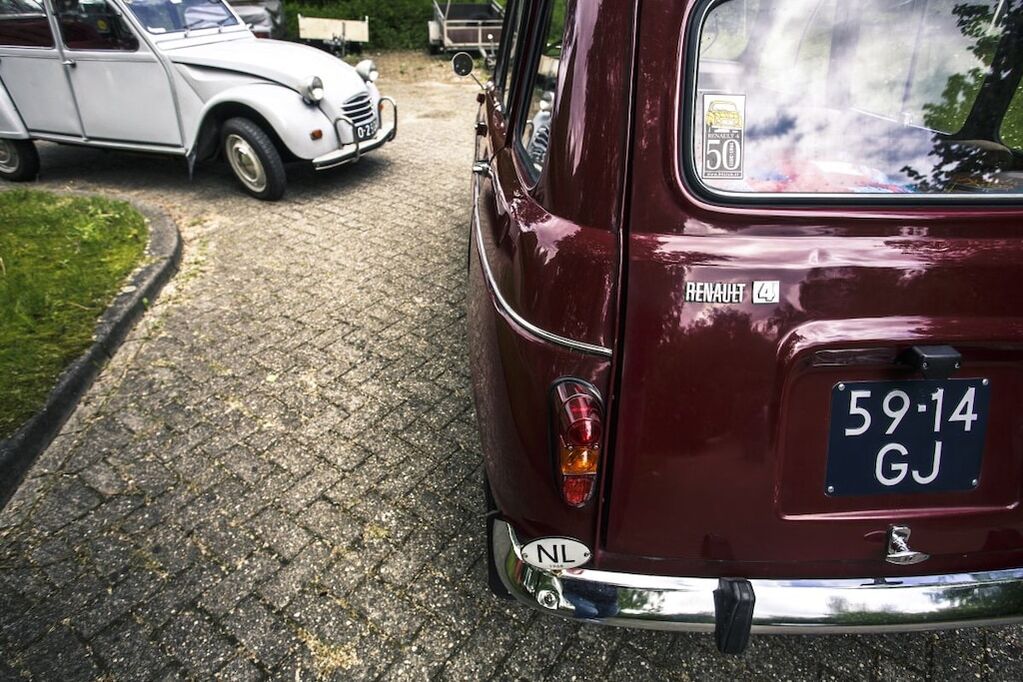
Renault 4 Has the Appearance of A Small Van
With its large tailgate and angular body, the Renault 4 has the appearance of a small van, something that does not stand in the way of its success at all. The new small Renault is very maturely motorized; instead of the noisy two-cylinder of the Deux Chevaux, the Four has a straightforward four-cylinder in-line engine of 27 hp, which at 750 cc is twice as large as the original Duck boxer. It contributes to the correct image of the car: the Renault 4 is the smart, compact car for the modern (sub)urbanite, who drives it to the supermarket to buy eggs. Eggs that the farmer has taken crease-free from the land with his 2CV.
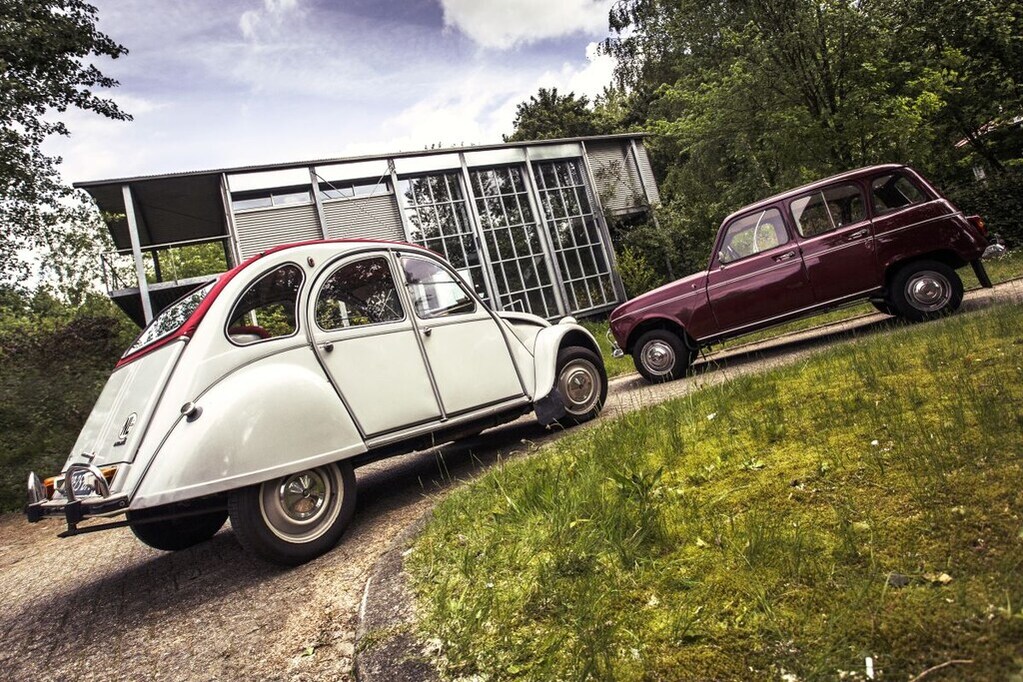
2CV in Practice The Faster Car
A Renault 4 with its larger engine should not be slower than a Citroën 2CV. On paper at least, because in 1968 it has an 845 cc engine of 30 hp to move 600 kg, which results in a specific power of 20 kg/hp. The 2CV as AZAM 6 has a power of 23 hp to provide propulsion of 540 kg: its specific power of 23 kg/hp means that each horsepower has three kilograms more to carry. Yet the 2CV is in practice the faster car, because it knows how to reap the benefits of its lower mass more easily. What also plays a role is the lighter operation of the Citroën compared to the Renault. For example, the gearbox of the R4 is not the easiest to handle, while with that of the 2CV you can select the correct gears with childish ease. His box is also closer to the driver than that of the Renault.
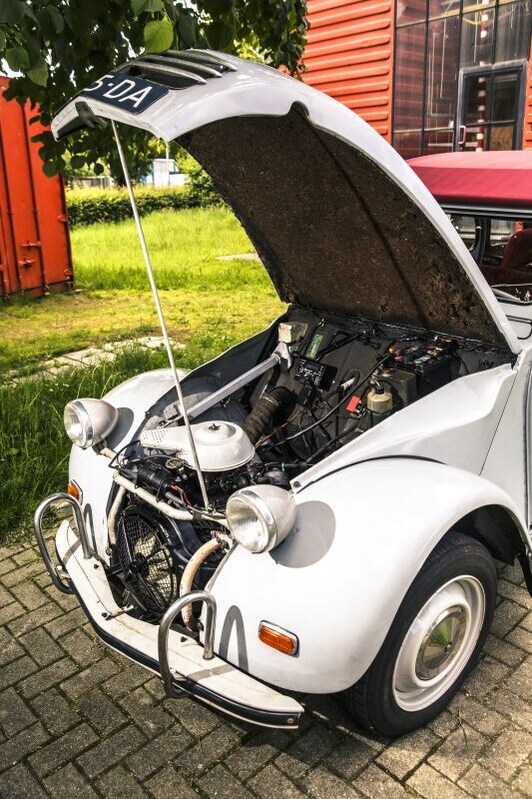
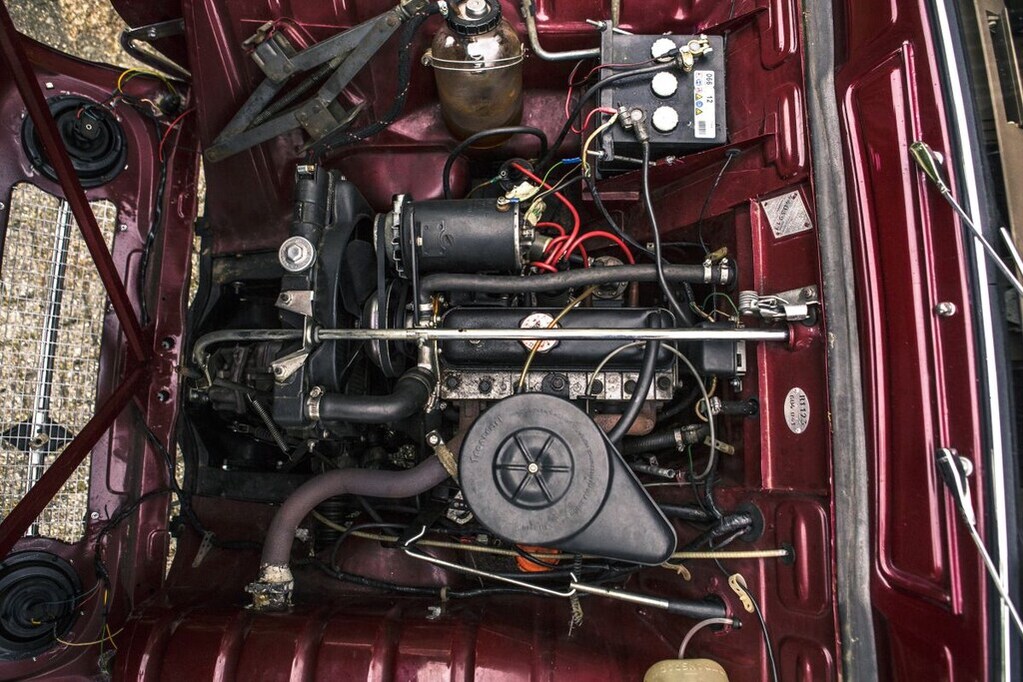
Open the hood of the Four and you immediately see how a huge rod reaches over the longitudinally placed engine to the gearbox that is placed in front of the front axle. In the Duck, the engine and gearbox are exactly the other way around. Shifting gears is like a game of table football, because you alternately twist and slide an iron rod. For the uninitiated (like me until this conscious day): 1 is to turn the lever counterclockwise and pull it towards you, 2 is to first push it away a bit to the neutral position, turn it to the middle position and push it again, 3 is (from 2) only pull and 4 is (from 3) the same movement as from 1 to 2. Reverse is opposite 1st gear. In later Fours there is a normal H-pattern, with the R right next to it.
Shifting gears is not the only sensation that comes with driving these cars. Or should we say: with driving the 2CV, which purely because of its idiosyncratic construction and accompanying properties has an even greater fun factor than the R4. This is actually a compliment to the Renault, because this car, due to its normal-sounding four-cylinder engine and less extremely responsive suspension system, quickly qualifies itself as the most modern, common or even timeless car of the two. Take a sober look at the car, and see how much its five-door concept has served as a model for countless small cars that have appeared in recent decades. Engine and gearbox could have been better placed transversely for a maximum of interior space, as BMC showed with the Mini in 1959.

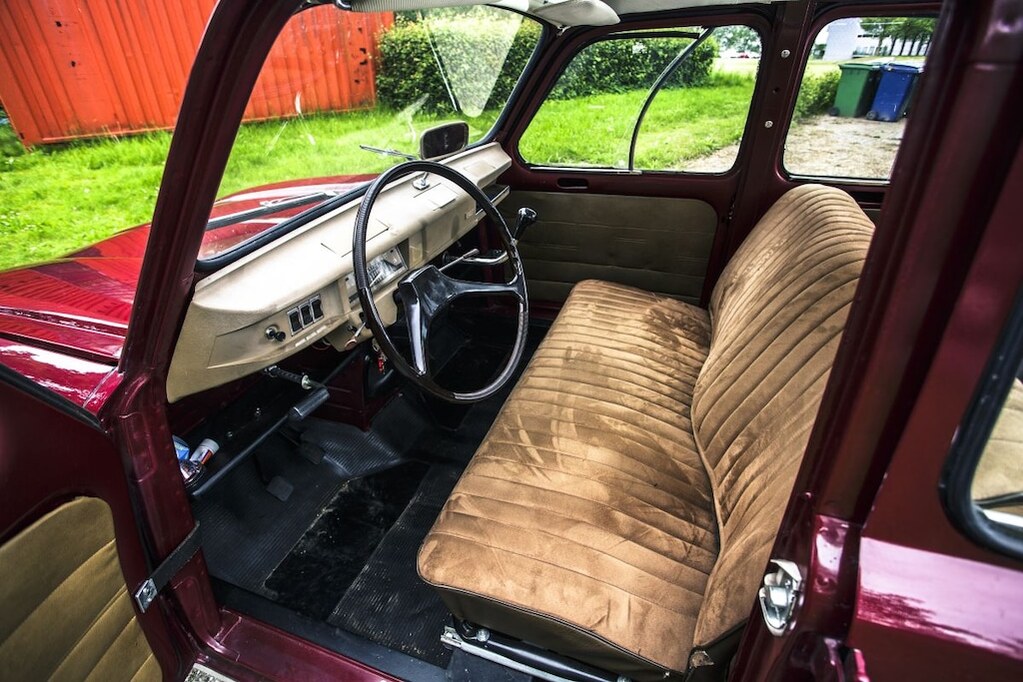
In terms of interior space, the Renault has about as much to offer as the 2CV. The seating on the incredibly soft seats is also fairly similar, but in the Duck you sink a lot deeper than in the Four anyway. And that actually fits in nicely with the passive character of the Citroën. From everything that car says to you: “Hey, lean back in my soft seats, roll the roof all the way open and enjoy the sun on your head during our quiet ride home.” Quiet here refers exclusively to the achievable pace, which on the speedometer is always much lower than you think from behind the wheel. With 60 on the clock, the 23 hp AZAM 6 feels like you’re driving roughly 90 and then the advance to 80 km/h has yet to begin. The strange sensation is that letting go of the accelerator pedal seems to have no noticeable effect on the car’s pace. It is simply a matter of waiting patiently until you reach speed, while you are amazed at the ease with which other road users disappear from sight. But it doesn’t matter, because arriving at the destination means an inevitable end to the fun. Yes, driving a 2CV is that much fun. Nothing to the detriment of the beautiful Renault 4 that accompanied him so stylishly all day, but it is the beautiful Ugly Duckling that endorses the statement that speed is completely subordinate to driving pleasure.
Humming From the Side Pipe of the Renault 4
The modest, friendly humming that the Renault makes from its is loudly drowned out, except when idling, by the unmistakable, often hysterically howling Duck sound. The Viertje strives to bring you and all your luggage cheaply and comfortably from A to B, which it succeeds excellently. The Eendje can also do this, but uses its exuberant character to turn the journey into an adventure. The Renault 4 has the civility of an orderly suburb, where the Citroën 2CV manifests itself as a slurred troublemaker who briefly stirs up a busy center. The Four is friendly, versatile and cozy, while the Duck throws itself heart and soul into the arms of its driver. Above all, he encourages mobile humanity to enjoy life to the fullest.